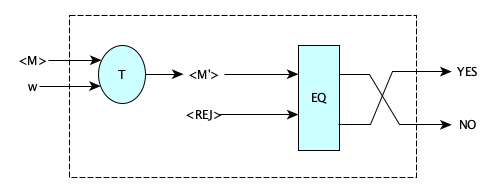- Here’s a JavaScript program that corresponds to the unit tests you were given.
regex_exercises.js
const regexes = { canadianPostalCode: /^[A-CEGHJ-NPR-TV-Z]\d[A-CEGHJ-NPR-TV-Z] \d[A-CEGHJ-NPR-TV-Z]\d$/, visa: /^4\d{12}(\d{3})?$/, masterCard: /^(5[1-5]\d{14}|222[1-9]\d{12}|22[3-9]\d{13}|2[3-6]\d{14}|27[01]\d{14}|2720\d{12})$/, notThreeEndingInOO: /^(?![\p{L}]oo$)\p{L}*$/iu, divisibleBy16: /^(0{1,3}|[01]*0000)$/, eightThroughThirtyTwo: /^([89]|[12]\d|3[0-2])$/, notPythonPycharmPyc: /^(?!pyc$|python$|pycharm$)\p{L}*$/u, restrictedFloats: /^\d+(\.\d*)?(e[+-]?\d{1,3})?$/i, palindromes2358: /^(?:([abc])\1|([abc])[abc]\2|([abc])([abc])[abc]\4\3|([abc])([abc])([abc])([abc])\8\7\6\5)$/, pythonStringLiterals: /^([ruf]|fr|rf)?('([^'\n\\]|\\.)*'|"([^"\n\\]|\\.)*"|'''('(?!'')|[^'\n\\]|\\.)*'''|"""("(?!"")|[^"\n\\]|\\.)*""")$/i, } export function matches(name, string) { return regexes[name].test(string) } -
C Function:
int f(const int n) { return n % 2 == 0 ? n / 2 : 3 * n + 1; }
WebAssembly:
(module (func $f (param $n i32) (result i32) (local.get 0) ;; n (i32.const 3) (i32.mul) ;; 3n (i32.const 1) (i32.add) ;; 3n + 1 (local.get 0) ;; n (i32.const 1) (i32.shr_s) ;; n / 2 (local.get 0) ;; n (i32.const 1) (i32.and) ;; odd(n) (i32.select) ;; if n is odd, return 3n + 1, else return n / 2 ) )
x86-64 Assembly:
.section .text .global f f: mov ecx, edi ; ecx = n (parameter is in edi) sar ecx ; ecx = n / 2 test dil, 1 ; dil = is_odd(n) lea eax, [rdi + 2*rdi + 1] ; eax = 3n + 1 cmovz eax, ecx ; if is_odd(n) then eax = n / 2 ret ; return eax
- To show that the language $EQ$ of all pairs of machines $M_1$ and $M_2$ such that $L(M_1) = L(M_2)$ is undecidable, we can reduce the halting problem to it.
Assume $EQ$ is decidable. Then there exists an always-halting TM that inputs two descriptions and outputs YES if the machines recognize exactly the same language and NO otherwise.
Now let’s define a function, $T$ that when given a machine description $\langle M\rangle$ and a string $w$, produces a machine that erases its input and replaces it with $w$, then simply runs $M$ (with input $w$). Thus $L(T(\langle M\rangle, w))$ is $\{w\}$ if $M$ halts on $w$ and is $\varnothing$ otherwise.
Now, there exists a very simple machine $REJECT\_ALL$ (you should be able to show it, it is so simple) that rejects (says NO to) all of its inputs. Note that $L(REJECT\_ALL) = \varnothing$.
Now here’s the good stuff. We’re going to make a machine that inputs some $\langle M\rangle$ and $w$, then we are going to run $EQ$ on $T(\langle M\rangle, w)$ and $REJECT\_ALL$. Then, if this run says YES, our new machine will say NO, and vice versa. WE’VE JUST DECIDED THE HALTING PROBLEM, PEOPLE. But the halting problem is undecidable, so our assumption that $EQ$ was decidable must have been incorrect. Therefore $EQ$ is undecidable.
A picture might help:

Remember, in this diagram $L(M') = \varnothing$ iff $M$ does not halt on $w$, so the dashed box would indeed be a halting problem decider if $EQ$ were a decider.